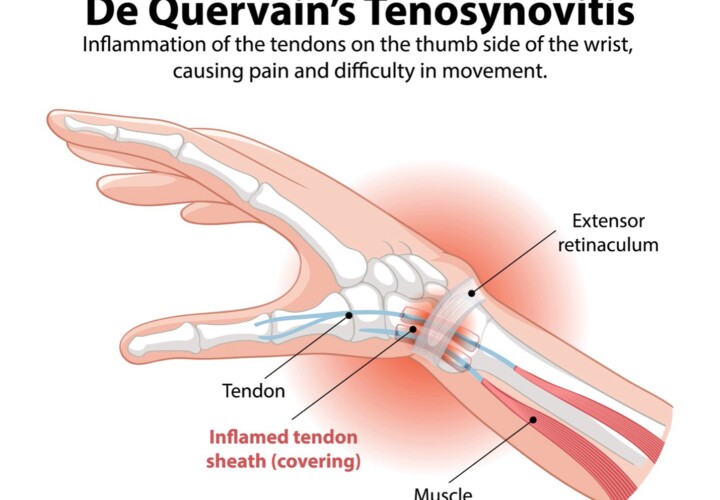Understanding Vertigo and the Role of Physical Therapy in Treatment
Vertigo is more than just a fleeting moment of dizziness—it’s a specific kind of dysfunction that creates a false sensation of movement. People with vertigo often feel as though they themselves are spinning, tilting, or swaying, or they may perceive the room around them to be moving when it isn’t. This disorienting sensation can be sudden and severe, or it can develop gradually, impacting quality of life and making day-to-day activities difficult to manage. Fortunately, physical therapy offers an effective and non-invasive approach to identifying and treating many of the common causes of vertigo.
What Is Vertigo?
Vertigo is not a disease itself but rather a symptom of a variety of medical conditions, especially those affecting the vestibular system—a part of the inner ear and brain that controls balance and eye movements. When the vestibular system is disrupted, it can create a mismatch between the sensory signals your brain receives, leading to that spinning sensation. Unlike general dizziness or lightheadedness, vertigo has a distinct spinning or movement component and often comes with other symptoms such as nausea, vomiting, balance problems, unsteadiness, and visual disturbances.
Types of Vertigo: Central vs. Peripheral
Vertigo can be broadly classified into two categories: central vertigo and peripheral vertigo.
- Peripheral vertigo is more common and is related to problems in the inner ear or the vestibular nerve, which connects the inner ear to the brain.
- Central vertigo stems from dysfunction in the brain, particularly in areas such as the cerebellum or brainstem.
Physical therapy is especially effective in treating peripheral vertigo, which includes conditions such as:
- Benign Paroxysmal Positional Vertigo (BPPV)
This is the most common cause of vertigo. BPPV occurs when tiny calcium crystals in the inner ear (called otoconia) become dislodged and move into the semicircular canals, interfering with the way the inner ear senses head movement. This causes brief episodes of vertigo, especially when changing head position—such as turning over in bed or looking up quickly.
- Meniere’s Disease
This chronic condition is characterized by episodes of vertigo, hearing loss, ringing in the ears (tinnitus), and a feeling of fullness in the affected ear. It is believed to result from abnormal fluid buildup in the inner ear. While the exact cause of Meniere’s disease is not well understood, physical therapy can help manage the balance issues associated with the condition.
- Vestibular Neuronitis
Also known as vestibular neuritis, this condition is the result of inflammation of the vestibular nerve, usually caused by a viral infection. It leads to sudden, severe vertigo that can last for days, often without hearing loss. Recovery may take several weeks, but physical therapy can significantly speed up the return to normal balance function.
- Labyrinthitis
Similar to vestibular neuritis, labyrinthitis involves inflammation—but in this case, it affects both the vestibular nerve and the cochlea (the part of the inner ear involved in hearing). This can cause both vertigo and hearing loss. Physical therapy can help patients regain their balance and reduce the lingering dizziness that often follows the acute phase of this condition.
How Physical Therapy Helps
When vertigo symptoms are related to peripheral vestibular disorders, physical therapy plays a central role in recovery. A licensed Physical Therapist (PT) will begin by conducting a thorough assessment. This includes reviewing your medical history, discussing your symptoms, and performing a series of tests to determine the underlying cause of your vertigo.
These tests might include:
- Positional testing (like the Dix-Hallpike maneuver) to check for BPPV
- Balance and gait assessments
- Eye movement tests (to track how your eyes move in response to head motion)
- Coordination evaluations
The goal is to identify which part of your vestibular system is affected and tailor a treatment plan specific to your needs.
Treatment Techniques Used by Physical Therapists
Once the root cause of your vertigo is identified, your therapist will guide you through exercises and interventions designed to reduce symptoms, improve balance, and restore normal vestibular function.
Common treatment methods include:
- Canalith Repositioning Maneuvers
These maneuvers, such as the Epley maneuver, are highly effective for treating BPPV. They involve a series of head and body movements designed to guide the dislodged calcium crystals (otoconia) back to their proper location in the inner ear where they no longer cause dizziness. Many patients experience immediate relief after just one or two sessions.
- Vestibular Rehabilitation Therapy (VRT)
VRT is a specialized form of physical therapy designed to treat vestibular disorders through customized exercises. These exercises challenge your balance system in a controlled way and help your brain adapt to the abnormal signals it is receiving. Over time, your brain learns to compensate for the imbalance, which helps reduce or eliminate vertigo symptoms.
Vestibular rehabilitation may include:
- Gaze stabilization exercises to improve control of eye movements and reduce symptoms like blurred vision or dizziness when moving your head.
- Balance training to strengthen the sensory systems responsible for balance (visual, vestibular, and proprioceptive).
- Habituation exercises that involve repeated exposure to specific movements or environments that trigger dizziness, with the goal of reducing sensitivity over time.
- Postural training to improve alignment and reduce risk of falls.
- Functional Training
Incorporating exercises that simulate daily activities—such as turning your head while walking or bending down to pick something up—can help prepare you to safely return to your normal routine.
The Importance of a Personalized Treatment Plan
Not all vertigo is the same, and a one-size-fits-all approach doesn’t work when it comes to treatment. Your physical therapist will work with you to create a treatment plan that aligns with your personal goals, level of activity, and any underlying medical conditions. You’ll also receive a customized home exercise program so you can continue making progress between appointments.
These home exercises are vital for long-term success. They help reinforce the work done in therapy and give you the tools to manage symptoms if they return. Your therapist will adjust your program as needed based on your progress and feedback.
When Referral to a Doctor Is Needed
Sometimes, during the assessment process, your physical therapist may determine that your vertigo symptoms are not caused by a peripheral vestibular issue. In these cases, they may refer you back to your physician for further testing or to see a specialist such as a neurologist or ENT (ear, nose, and throat doctor). This is especially important if:
- Your symptoms are worsening instead of improving
- You are experiencing neurological symptoms (e.g., double vision, numbness, difficulty speaking)
- Your symptoms do not match any known vestibular pattern
This collaborative approach ensures you get the right diagnosis and the most effective care.
Living with Vertigo: The Day-to-Day Challenges
Vertigo can be disruptive to your everyday life. Activities that were once routine—getting out of bed, turning your head, driving, bending over to tie your shoes—can suddenly become stressful or even dangerous. Many people also experience anxiety related to the unpredictability of their symptoms, which can impact their social life, work performance, and emotional well-being.
Some common issues people with vertigo face include:
- Trouble walking or standing without losing balance
- Fear of falling, especially in unfamiliar environments
- Difficulty focusing or concentrating
- Fatigue caused by constant effort to stay balanced
- Avoidance of specific movements that trigger symptoms
These challenges can lead to a cycle of reduced activity and deconditioning, which makes symptoms worse. That’s why early intervention with physical therapy is so important.
Benefits of Physical Therapy for Vertigo
There are several compelling reasons to consider physical therapy for vertigo:
- Non-invasive: Physical therapy offers a drug-free, surgery-free option for many vestibular conditions.
- Evidence-based: Numerous studies support the effectiveness of VRT and positional maneuvers in reducing symptoms.
- Empowering: You’ll learn how to manage your symptoms and regain control of your life.
- Safe: Therapy is performed in a controlled environment by professionals trained to monitor your symptoms and progress.
Most importantly, physical therapy focuses on long-term relief—not just temporary fixes. With consistent treatment and active participation, many patients report significant improvement or complete resolution of their vertigo symptoms.
Regain Control with Physical Therapy
If you’re experiencing vertigo, you don’t have to suffer in silence or adjust to a limited lifestyle. Vertigo can be managed and often resolved with the right guidance and therapy. Physical therapists are specially trained to help you identify the root cause of your symptoms and guide you through safe, effective treatments that promote lasting recovery.
Whether your symptoms are mild or severe, reaching out to a qualified physical therapist is the first step toward regaining your balance, independence, and confidence.
At Hohman Rehab and Sports Therapy, our expert physical therapists are ready to develop a personalized treatment plan tailored to your needs and goals. Whether your symptoms just started or have been interfering with your daily life for a while, we’re here to support your recovery and help you get back to doing what you love—pain-free.
We proudly serve Central Florida with three convenient locations:
📍 Clermont Office
236 Mohawk Road, Clermont, FL 34715
📞 Phone: 352-404-6908
📠 Fax: 352-404-6909
📍 Ocoee Office
11095 W. Colonial Drive, Ocoee, FL 34761
📞 Phone: 407-347-8936
📠 Fax: 352-404-6909
📍 Apopka Office
125 S. Park Avenue, Apopka, FL 32703
📞 Phone: 407-410-3200
📠 Fax: 352-404-6909
Scheduling your evaluation is easy!
Visit our website at www.hohmanrehab.com to schedule an appointment for a time convenient for you.



